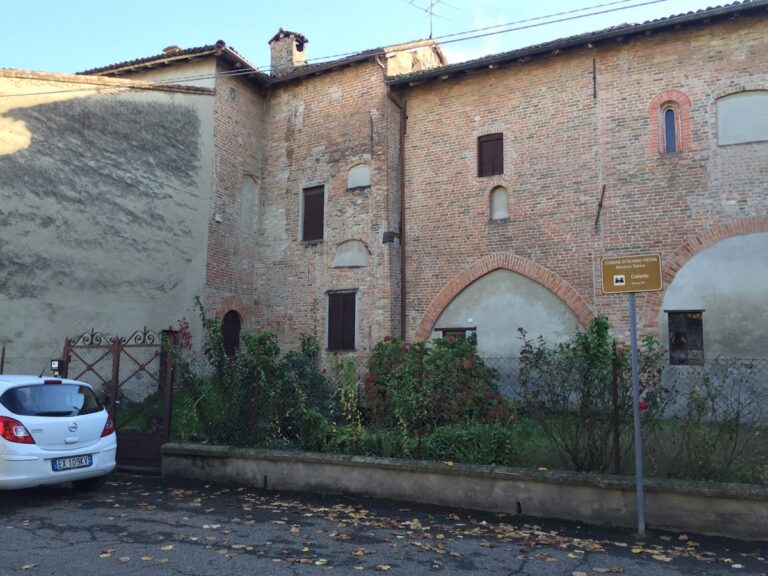Castello di Branduzzo: A Medieval and Renaissance Castle in Italy
Visitor Information
Google Rating: 4.4
Popularity: Very Low
Google Maps: View on Google Maps
Official Website: fondoambiente.it
Country: Italy
Civilization: Unclassified
Remains: Military
History
The Castello di Branduzzo stands in the small settlement of Branduzzo, within the municipality of Castelletto di Branduzzo in Italy. This fortified complex was built during the medieval period, reflecting the region’s strategic importance near the Po River in the fertile Po Valley.
The site was closely linked to the Botta family, who had established themselves in the Pavia area by the end of the 13th century. Although they had lived locally since 1298, official ownership of the Branduzzo lands was only recognized in the 15th century. During this time, the Botta family made significant alterations to the castle, retaining its defining square towers and sturdy walls. The 15th century marked the castle’s most notable period of growth and development, coinciding with the Renaissance era. This phase of expansion included renovations that enhanced its defensive and residential qualities, reflecting changing architectural styles.
One of the most prominent figures connected to the castle was Bergonzio Botta, who served as general treasurer of the Duchy of Milan. He played a part in hydraulic engineering projects involving the nearby Po River, collaborating with Leonardo da Vinci on plans to divert the waterway. In 1488, the castle gained further prestige by hosting an elaborate celebration for the marriage of Gian Galeazzo Sforza, nephew of the ruling duke Ludovico il Moro, to Isabella d’Aragona. This event underscored the castle’s role as a noble residence during the Renaissance.
Before this, during the rule of the Visconti family, the castle was often used as a base for hunting activities, demonstrating its integration into the leisure pursuits of the Milanese nobility. The Botta family maintained prosperity and influence through the 16th century, further solidified in 1634 when their lineage merged with that of the powerful Genoese Botta Adorno family through marriage. In more recent times, ownership has transferred outside the historic family lines to the Parrocchetti Piantanida family. After decades of neglect lasting around thirty years, the castle has fallen into a state of advanced decay.
Remains
The Castello di Branduzzo is a sizeable medieval complex that exhibits characteristics typical of Lombard Renaissance architecture, following the so-called cascina-castle model. This architectural approach combines noble residence with agricultural functionality, forming a compact settlement enclosed by long defensive walls. Within these enclosures were not only the main living quarters but also extensive stables, numerous farm buildings, a large garden, and an elegant portico. Collectively, the complex could accommodate hundreds of inhabitants, effectively serving as a self-sufficient community.
The central palace building has a roughly rectangular footprint arranged around a spacious internal courtyard. Four towers anchor the corners: two smaller ones designed in the Visconti style, which tend to be simpler and more robust, and two larger ones reflecting the influence of Sforza architectural preferences, known for their imposing scale. The main entrance gate stands out for its refined decorative touches, embodying the sophisticated stylistic vocabulary of the Lombard Renaissance period. The palace’s windows are adorned with terracotta elements, a typical decorative material choice in the region, which add a distinct artistic flair to the otherwise fortified structure.
Despite its former grandeur, today the castle remains in a state of complete deterioration. After several decades without maintenance or restoration efforts, the once-impressive walls and buildings have succumbed to extensive decay. Nevertheless, the surviving layouts and stylistic details bear witness to its historical role as both a defensive fortress and a hub of noble and agricultural activity during the Milanese Renaissance.







